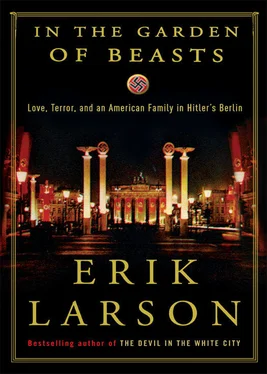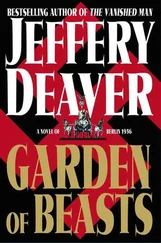But one great love now appeared to burn just as bright as ever. Martha began writing to Bassett, her former husband—the first of her three great loves—and soon they were corresponding as if they were back in their twenties, parsing their past romance to try to figure out what had gone wrong. Bassett confessed he had destroyed all the love letters she had ever sent him, having realized “that, even with the passage of time, I could never bear to read them, much less would I want anyone else to share them after I’ve gone.”
Martha, however, had kept his. “Such love letters!” she wrote.
“One thing is sure,” she told him in a November 1971 letter, when she was sixty-three years old. “Had we stayed together, we would have had a vital, varied and passionate life together…. I wonder if you would have remained happy with a woman as unconventional as I am and was, even though we would not have had the complications that came to me later. Still I have had joy with sorrow, productiveness with beauty and shock! I have loved you and Alfred and one other, and still do. So that is the queer bird, still lively, that you once loved and married.”
In 1979 a federal court cleared her and Stern of all charges, albeit grudgingly, citing lack of evidence and the deaths of witnesses. They longed to return to America, and considered doing so, but realized another obstacle remained in their path. For all those years in exile they had not paid U.S. taxes. The accumulated debt was now prohibitively high.
They considered moving elsewhere—perhaps England or Switzerland—but another obstacle arose, the most stubborn of all: old age.
By now the years and illness had taken a serious toll on the world of Martha’s recollection. Bill Jr. had died in October 1952 of cancer, leaving a wife and two sons. He had spent his years after Berlin moving from job to job, ending as a clerk in the book department of Macy’s in San Francisco. Along the way, his own left-leaning sympathies had caused him to run afoul of the Dies Committee, which had declared him “unfit” for employment by any federal agency, this at a time when he was working for the Federal Communications Commission. His death had left Martha the sole survivor of the family. “Bill was a very swell guy, a warm and fine person, who had his share of frustration and suffering—maybe more than his share,” Martha wrote in a letter to Bill’s first wife, Audrey. “I miss him so terribly and feel empty and alone without him.”
Quentin Reynolds died on March 17, 1965, at the not-very-old age of sixty-two. Putzi Hanfstaengl, whose sheer size had seemed to make him invulnerable, died on November 6, 1975, in Munich. He was eighty-eight. Sigrid Schultz, the Dragon from Chicago, died on May 14, 1980, at eighty-seven. And Max Delbrück, presumably with a full head of hair, passed away in March 1981, his exuberance quenched at last. He was seventy-four.
This great withering was very sad and raised powerful questions. In March 1984, when Martha was seventy-five years old and Stern eighty-six, Martha asked a friend, “Where do you think we should die if we could choose? Here or abroad? Would it be easier if the survivor was left here with painful memories? or to get the hell out and go alone to a new place; or is it better to go together and then be bereft and saddened by unrealized dreams and no or few friends in a new environment but still having had a few years to establish some sort of home abroad?”
Martha was the survivor. Stern died in 1986. Martha remained in Prague even though, as she wrote to friends, “Nowhere could be as lonely for me as it is here.”
She died in 1990 at the age of eighty-two, not precisely a hero but certainly a woman of principle who never wavered in her belief that she had done the right thing in helping the Soviets against the Nazis at a time when most of the world was disinclined to do anything. She died still dancing on the rim of danger—a queer bird in exile, promising, flirting, remembering—unable after Berlin to settle into her role as hausfrau and needing instead to see herself once again as something grand and bright.
Bassett, old loyal Bassett, outlasted her by another six years. He had forsaken the magnificent copper beech of Larchmont for an apartment on Manhattan’s Upper East Side, where he died peacefully at age 102.
Years after the war, a cache of documents came to light that proved to be transcripts of conversations between Hitler and his men, recorded by his deputy Martin Bormann. One of these transcripts concerned a conversation over dinner in October 1941 at Wolfsschanze, or Wolf’s Lair, Hitler’s redoubt in East Prussia. The subject of Martha Dodd came up.
Hitler, who once had kissed her hand, said, “To think that there was nobody in all this ministry who could get his clutches on the daughter of the former American ambassador, Dodd—and yet she wasn’t difficult to approach. That was their job, and it should have been done. In short, the girl should have been subjugated…. In the old days when we wanted to lay siege to an industrialist, we attacked him through his children. Old Dodd, who was an imbecile, we’d have got him through his daughter.”
One of Hitler’s dinner companions asked, “Was she pretty at least?”
Another guest snorted, “Hideous.”
“But one must rise above that, my dear fellow,” Hitler said. “It’s one of the qualifications. Otherwise, I ask you, why should our diplomats be paid? In that case, diplomacy would no longer be a service, but a pleasure. And it might end in marriage!”
SOURCES AND ACKNOWLEDGMENTS

The country club where Dodd’s farm stood (photo credit sack.1)
What I did not realize as I ventured into those dark days of Hitler’s rule was how much the darkness would infiltrate my own soul. I generally pride myself on possessing a journalist’s remove, the ability to mourn tragedy and at the same time appreciate its narrative power, but living among Nazis day in, day out proved for me a uniquely trying experience. For a time I kept on my desk a copy of Ian Kershaw’s Hitler, 1889–1936: Hubris , a work of grand scope that served as my field guide to the politics of the era. On the cover is a photograph of Hitler that became for me so repulsive—apologies to Sir Ian—that I had to keep the book on my desk facedown, as it were, for to start each day with a look at those hate-filled eyes and slack cheeks and that fragment of Brillo that passed for a mustache was far too dispiriting.
There exists a vast oeuvre of historical writing on Hitler and World War II that must be read no matter how small the episode one plans to study. All this reading deepened my spiritual malaise, not because of the sheer volume involved but because of the horrors revealed. It is difficult to fathom the breadth and depth of the landscape of war created by Hitler—the deportations of Jews to extermination camps even after the inevitability of Germany’s defeat became obvious to all; the tank battles against Russian forces that took tens of thousands of lives in a matter of days; the reprisal killings for which the Nazis became infamous, where on some sunny afternoon in a village in France a dozen men and women would be whisked from their homes and shops, stood before a wall, and shot. No preamble, no good-byes; just birdsong and blood.
Certain books, Kershaw’s Hubris foremost among them, proved exceptionally helpful in detailing the broad play of forces and men in the years that preceded World War II. I include here a couple of old but still worthy classics, Alan Bullock’s Hitler: A Study in Tyranny and William Shirer’s The Rise and Fall of the Third Reich , as well as the more recent works of Kershaw’s doppelgänger in scholarship, Richard J. Evans, whose The Third Reich in Power: 1933–1939 and The Third Reich at War: 1939–1945 are massive volumes lush with compelling, if appalling, detail.
Читать дальше













